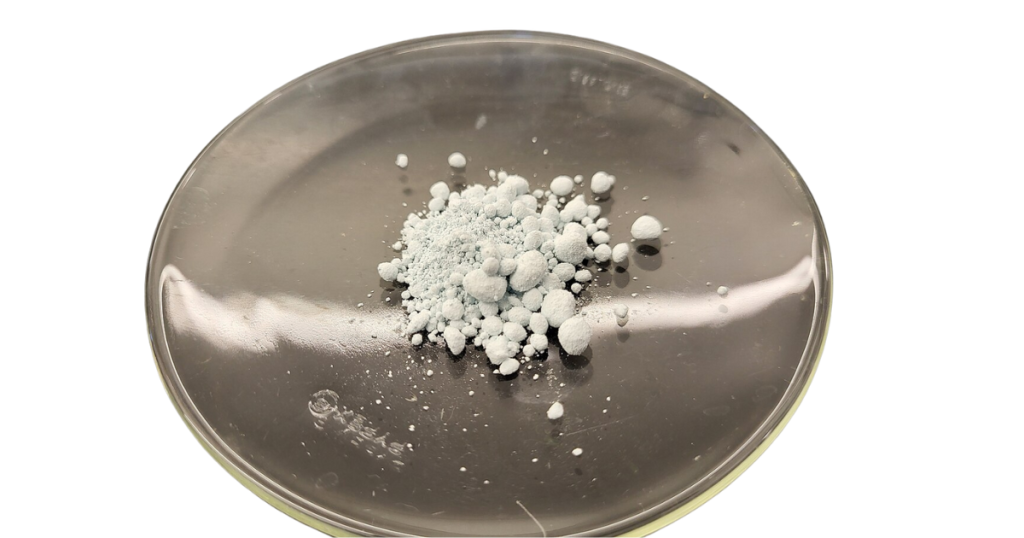Exploring Cuprous Bromide (CuBr)
Cuprous Bromide (CuBr) is a fascinating inorganic compound with a wide range of industrial and scientific applications. From its role as a catalyst in chemical synthesis to its use in photography and material science, CuBr has carved a niche for itself across various industries. This blog dives into the unique properties, synthesis methods, applications, and safety measures of Cuprous Bromide, offering a comprehensive guide for chemistry students, researchers, and industry professionals. Whether you’re seeking technical insights or practical knowledge, this guide has you covered.
Understanding Cuprous Bromide
Cuprous Bromide (CuBr) is an inorganic compound combining copper and bromine. It crystallizes as a white or pale green powder and is often used in high-value industries due to its versatile chemical properties. Unlike its counterpart, Copper(II) Bromide (CuBr₂), CuBr is less reactive and finds unique applications in photochemistry, gas purification, and advanced material development.
Key attributes of CuBr:
- Chemical formula: CuBr
- Molar mass: 143.45 g/mol
- Appearance: White to pale green solid, depending on purity
- Solubility: Insoluble in water but dissolves in ammonia and other polar solvents.
Now that we’ve introduced CuBr at a glance, let’s move on to understand its remarkable chemical and physical properties.
Detailed Properties of Cuprous Bromide
Chemical Properties
CuBr is known for its ability to engage in chemical synthesis reactions, including its role as a catalyst in organic reactions like Sandmeyer and Ullmann cross-coupling. Its chemical behavior includes:
- A stable bond between copper and bromine, making it less prone to rapid decomposition.
- Reactivity with acids like hydrobromic acid, forming higher-order bromine compounds.
- Its ability to alternate between Cu(I) and Cu(II) oxidation states under specific reaction conditions.
Physical Properties
Here are some noteworthy physical characteristics of CuBr:
- Melting Point: 504°C, which makes it thermally stable for various applications.
- Density: 4.72 g/cm³, leading to its widespread use in material science.
- Color Properties: Pale green tints are typically due to copper oxidation contaminants.
By combining these chemical and physical aspects, CuBr proves itself as a crucial material for specialized applications.
How Cuprous Bromide Is Made
The production and synthesis of Cuprous Bromide can be executed in both laboratory and industrial settings. These methods ensure high purity and the compounds’ optimal behavior for end-use applications.
Lab Synthesis
- Reaction with Hydrobromic Acid: CuBr can be synthesized by reacting Copper(I) Oxide (Cu₂O) with hydrobromic acid while maintaining controlled temperatures.
- Reduction of Copper(II) Bromide: CuBr can also be prepared by reducing Copper(II) Bromide (CuBr₂) with gaseous sulfur dioxide.
- Purification: To ensure a high-grade product, the resulting CuBr is purified sequentially, often washed with glacial acetic acid and ether.
Industrial Production
Cuprous Bromide’s large-scale manufacturing methods include:
- Direct Combination: Heated copper is exposed directly to bromine gas to yield CuBr.
- Recycled Copper Methods: Copper scrap is often reacted with bromine water, making the process both sustainable and efficient for bulk production.
- Quality Control: Industries employ rigorous washing and drying systems to eliminate impurities and excess reactants, ensuring consistent quality.
These methodologies show how varied techniques are used depending on the required scale and purity.
Applications of Cuprous Bromide
CuBr’s properties make it a valuable chemical across numerous industries:
Chemical Synthesis
- Reagent Role: CuBr is utilized in processes such as Sandmeyer and Ullmann coupling reactions.
- Polymer Science: Acts as a catalyst in atom-transfer radical polymerization (ATRP), aiding controlled polymer production.
Photography
- Light Sensitivity: Cuprous Bromide forms a critical component in photographic emulsions, enhancing image clarity and resolution.
- Darkroom Processing: Plays a role in high-quality photographic material manufacturing.
Material Science and Other Uses
- Semiconductor Technology: CuBr is instrumental in fabricating optical and electronic devices due to its unique physical properties.
- Gas Purification: It efficiently removes impurities like acetylene during ethylene production.
- Fungicides and Printing: CuBr appears in formulations for fungicides and specific types of printing inks.
These diverse applications underline CuBr’s reputation as an adaptable compound in cutting-edge science and industry.
Safety Guidelines for Handling Cuprous Bromide
Handling chemicals requires precision and care, and Cuprous Bromide is no exception. To ensure safety and maintain efficiency, follow these precautions:
- Wear PPE: Always use gloves, lab coats, and safety goggles to minimize direct exposure.
- Ventilation Matters: Work in a well-ventilated environment or under fume hoods to prevent inhalation of dust or fumes.
- Proper Storage: Store Cuprous Bromide in tightly sealed containers, away from moisture and oxidizing agents.
- Avoid Spills: Handle with care and clean any spills promptly to avoid contamination.
- Waste Disposal: Dispose of used chemicals as per regional hazardous material guidelines to mitigate environmental impact.
By adhering to these measures, CuBr can be safely leveraged in both educational and industrial contexts.
Frequently Asked Questions
What is Cuprous Bromide used for?
CuBr is used in chemical synthesis, photography, material science, and industries like gas purification and printing.
How is CuBr synthesized in the lab?
It involves reducing Copper(II) Bromide or reacting Copper(I) Oxide with hydrobromic acid under controlled conditions.
What are the safety precautions when handling CuBr?
Wear PPE, work in a ventilated area, and store it in cool, dry conditions.
Can CuBr be harmful to the environment?
Improper disposal of CuBr can have environmental impacts, but following regulations minimizes risks.
Why is Cuprous Bromide a versatile catalyst?
Its unique chemical properties allow it to facilitate numerous organic reactions efficiently.
How should CuBr be stored to prevent degradation?
Store it in tightly sealed containers away from moisture and direct light sources.
By addressing these questions, the FAQs serve as a quick reference for anyone working with or researching CuBr.
Future Insights for Cuprous Bromide
Cuprous Bromide’s role in science and industry continues to expand, particularly with emerging applications in nanotechnology and sustainable materials. Researchers are exploring innovative ways to enhance its efficiency and minimize its environmental footprint. For anyone interested in cutting-edge chemistry, CuBr offers plenty of opportunities to innovate and discover.Meta Data
Meta Title
ELearn about Cuprous Bromide CuBr properties, synthesis, applications, and safety. Discover its uses in chemical synthesis, photography, and material science.xploring Cuprous Bromide CuBr and Its Applications




